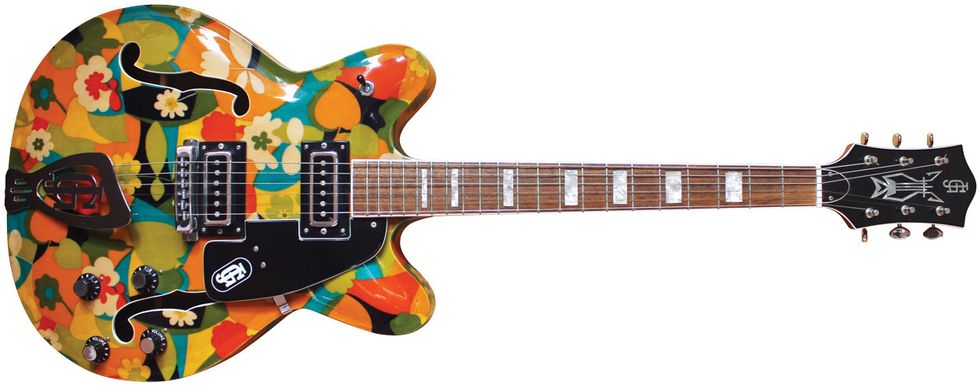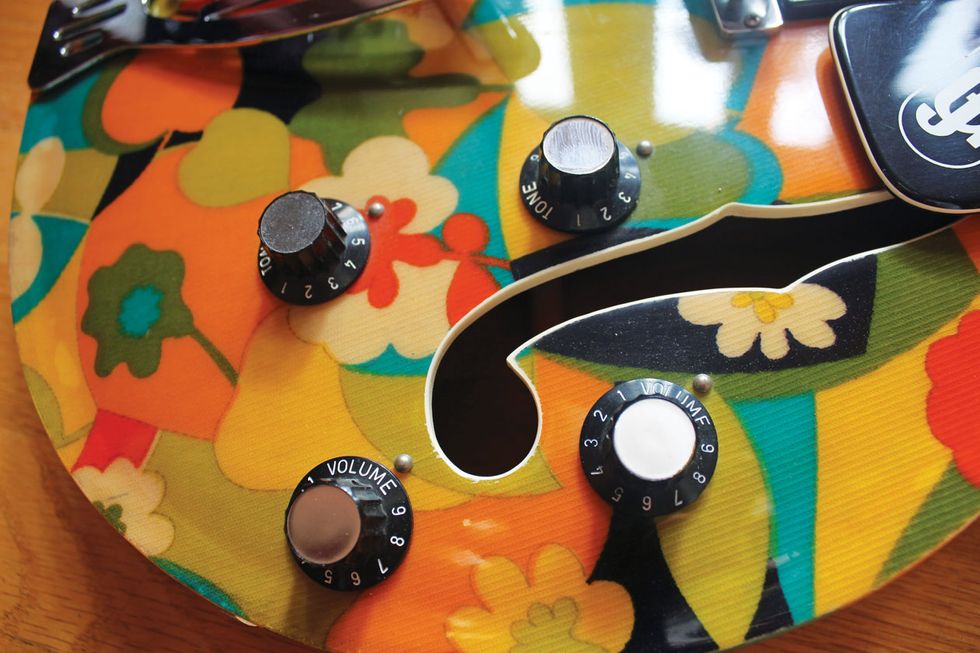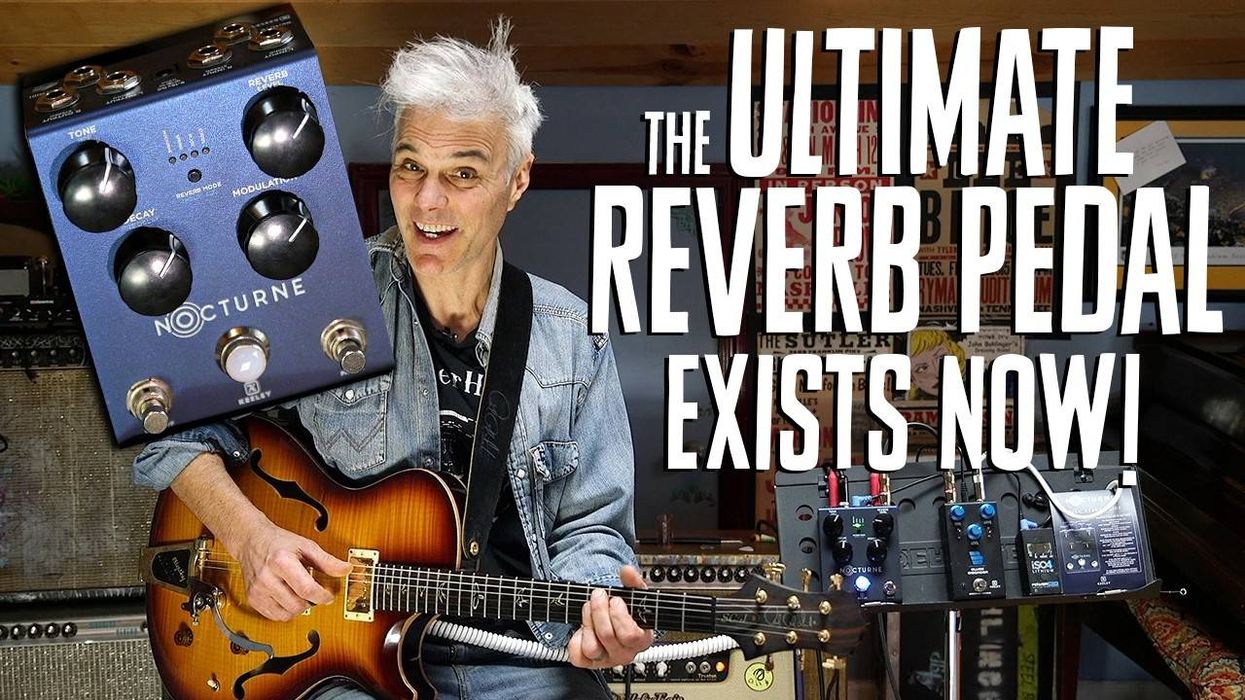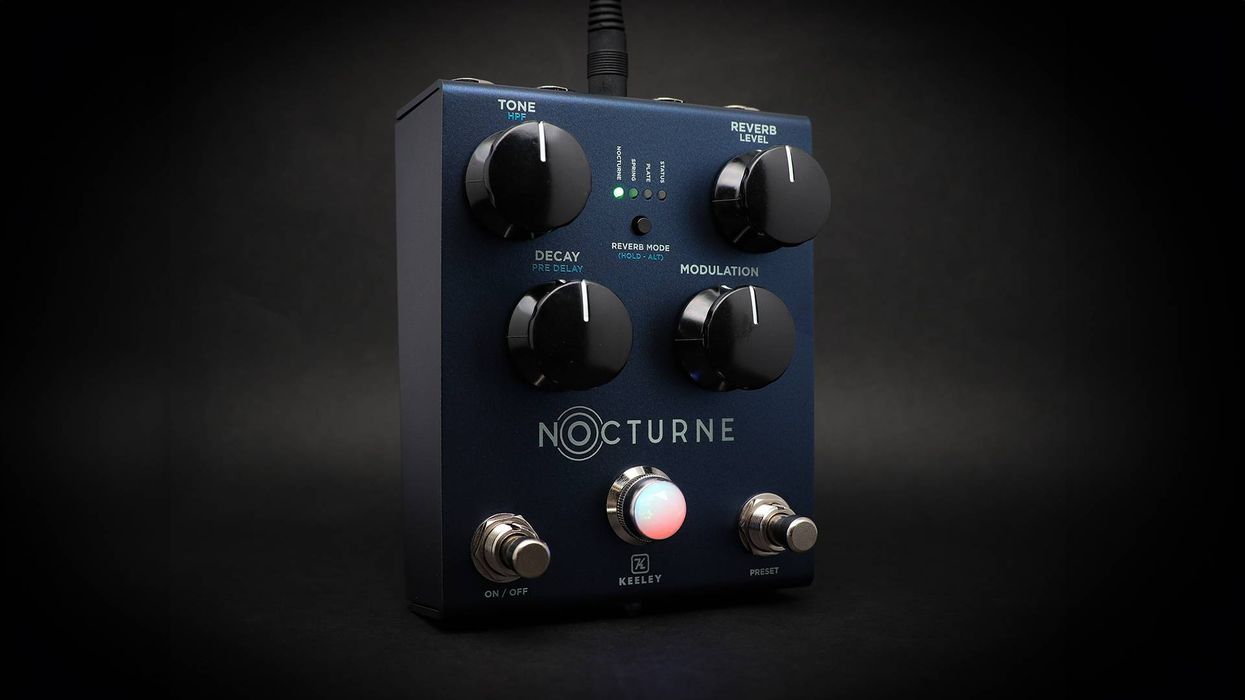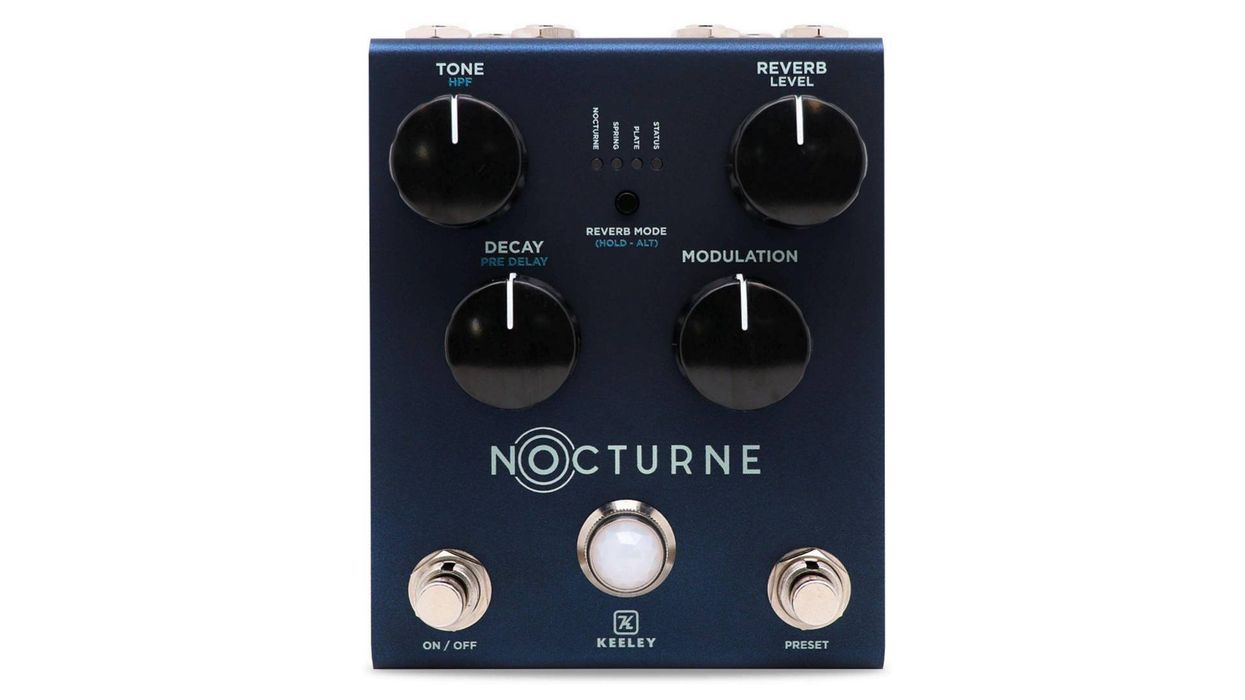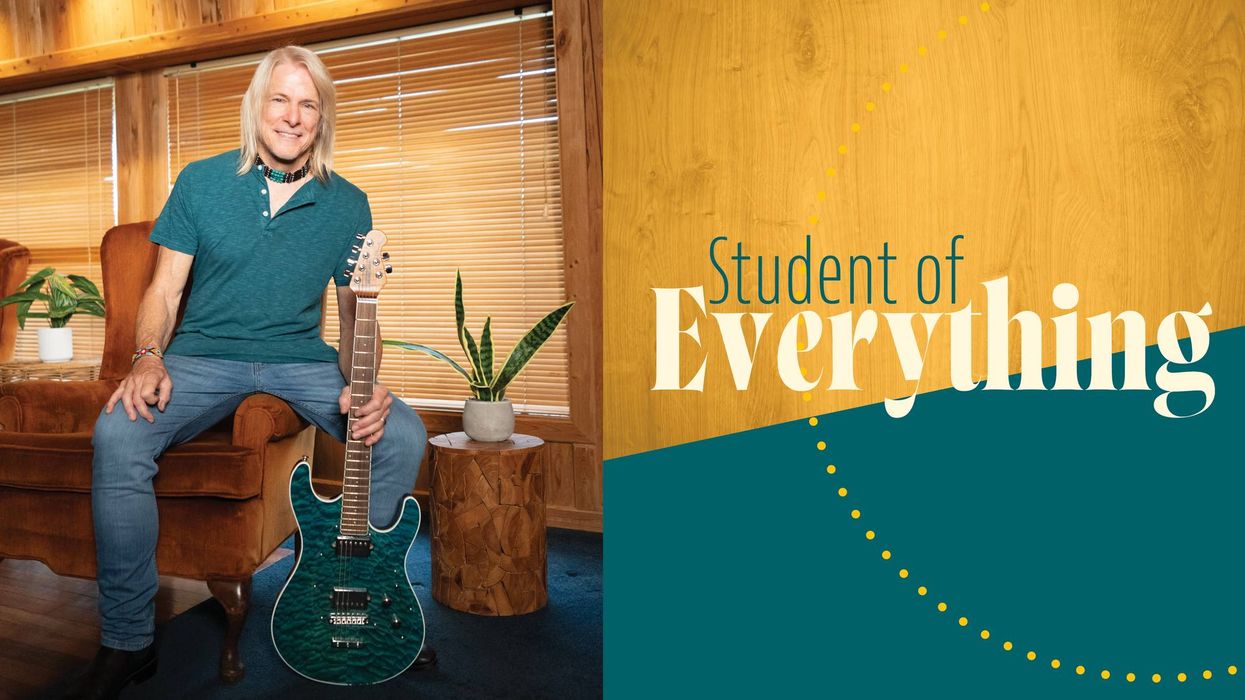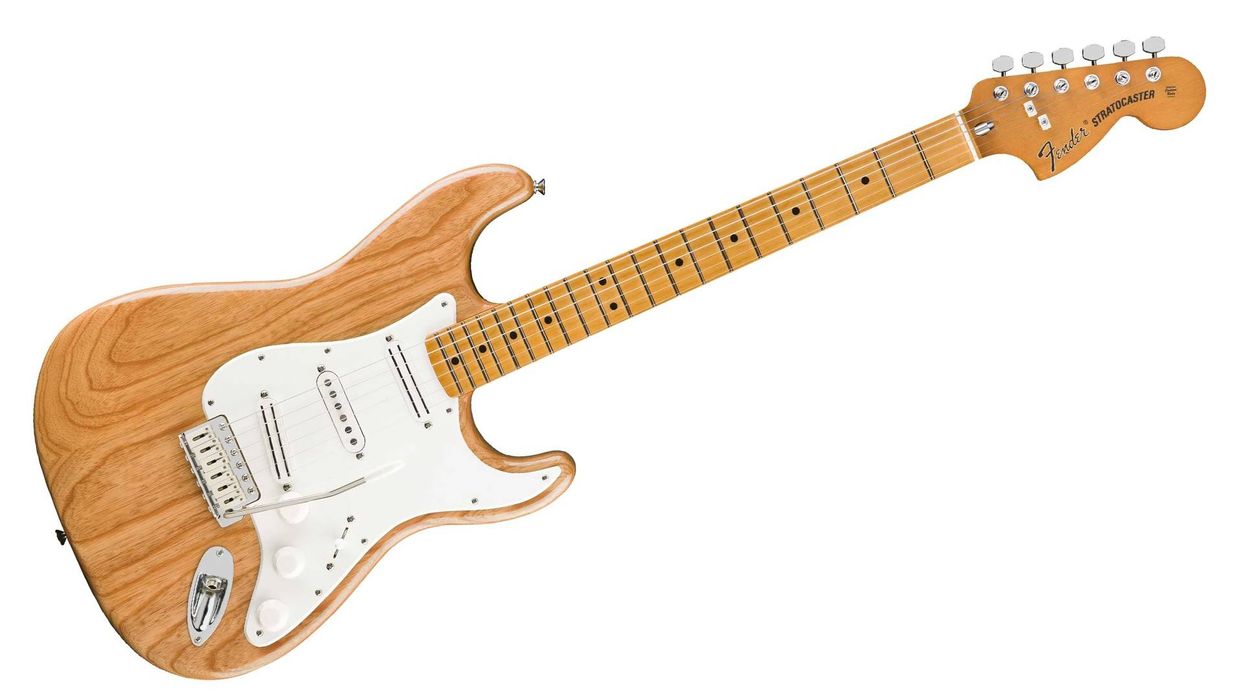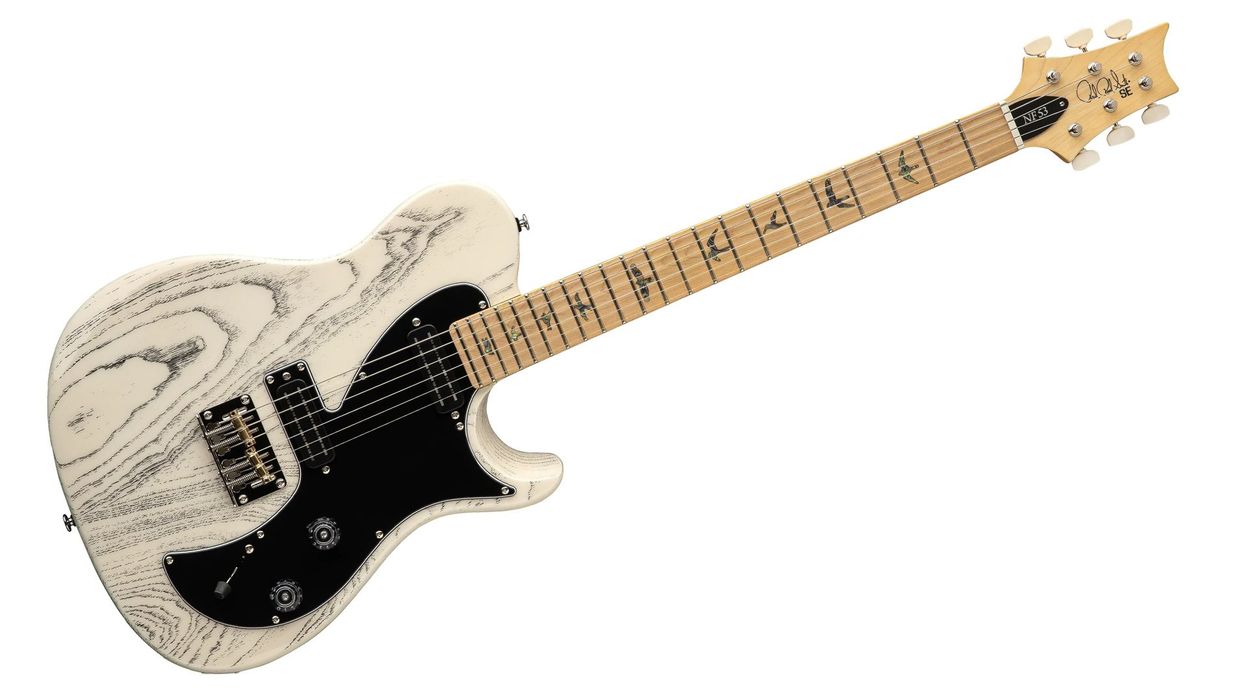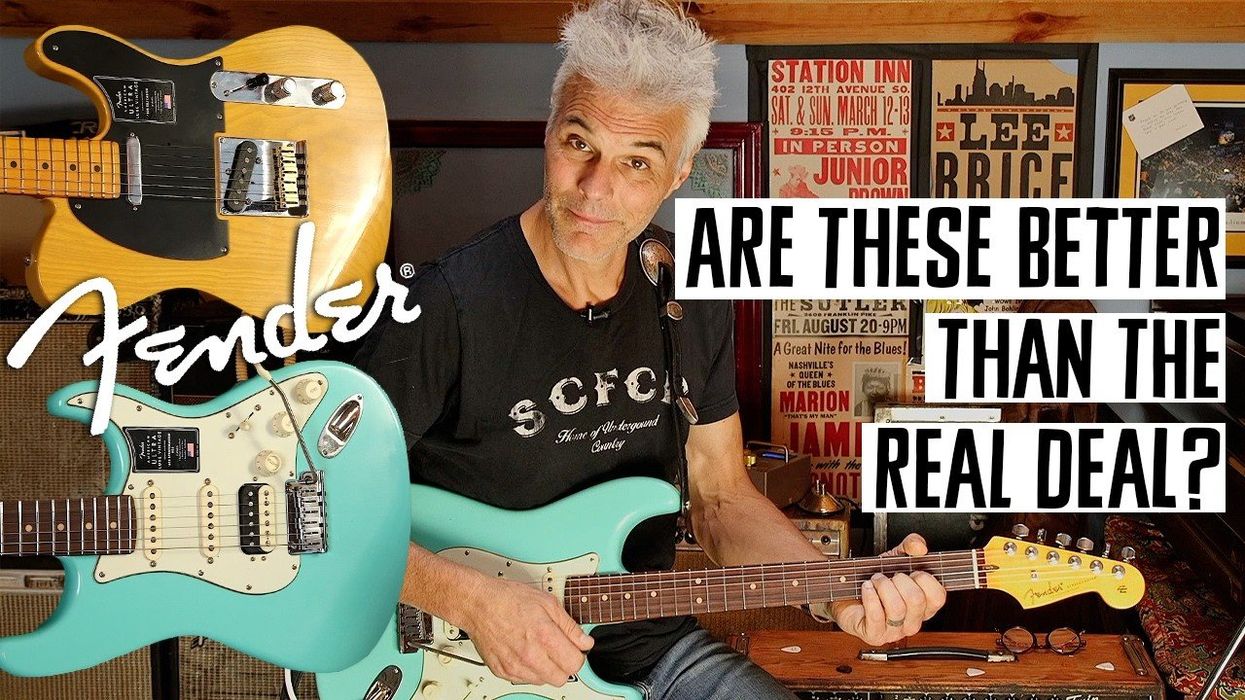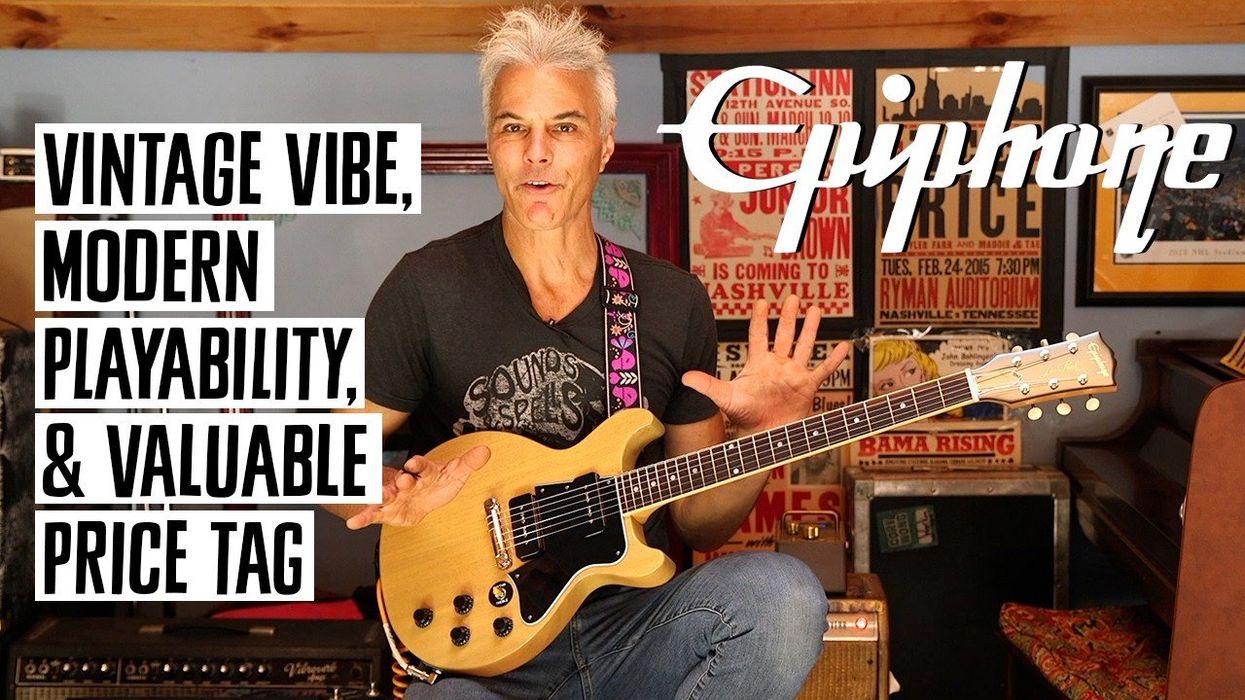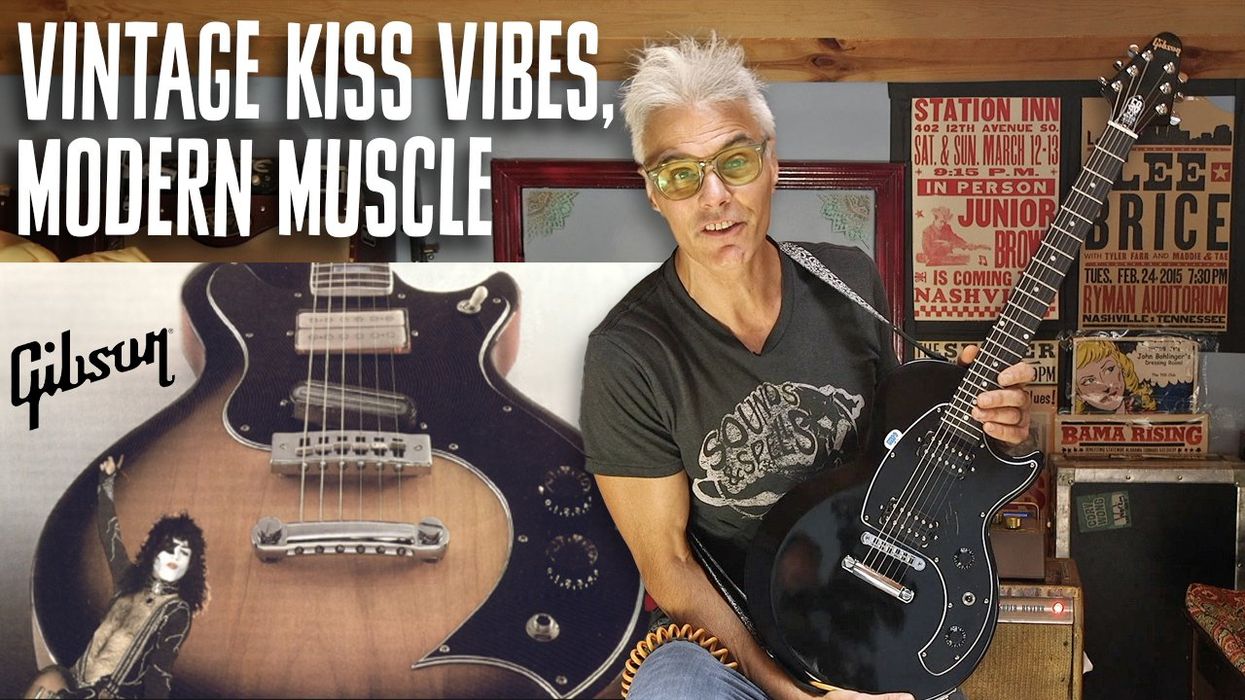Let’s say you’re the owner of a music store in the 1960s, and you want to attract customers with some sort of advertisement or gimmick. What kind of sign would you hang? Or better yet, what instrument would you display in the front window? Well folks, Photo 1 shows the ideal item for that purpose—the perfect symbol for a guitar-playing public in the late ’60s. Flower power, baby!
Okay, rewind 50 years: There actually was a music store in Oregon that displayed this very guitar in the window. This must have been the storeowner’s prized possession, because after the shop closed, the guitar basically became a closet queen—a time capsule from an era when electric guitars ruled and psychedelic imagery was all the rage.
This particularly flashy “JG” guitar was built by the Zerosette company in Italy. Zerosette began as a maker of very fine accordions, but like other instrument manufacturers of the time, the company was soon producing some truly interesting guitars. Many of the Italian guitar makers applied what they knew about accordions to guitar production, so we often see lots of plastic, pearloid, push buttons, and other oddball parts that were unique to their crazy guitar models.
In Europe, Zerosette guitars typically carried a few different brand names, including JG, Juliett (both derived from the company president’s name, Julio Giulietti), and Rayhorn. Stateside, the Hershman Musical Instrument Company in New York and the Sano Company in New Jersey primarily imported Zerosette guitars. Hershman used the Goya brand name and featured the awesome Rangemaster guitars with split-pickup designs. Sano, which seemed to import mostly hollowbody guitars, used its own name, as well as the Contessa brand on amps they built for Hohner. And as usual for the era, many Zerosette guitars were simply imported without any brand names or indication where they came from.
The model number for this one is called SAD 2, which I seriously think stands for pSychADelic! Aesthetically beautiful in just about every way, the guitar resembles a work of art and its finish is just gonzo. Speaking of the finish, it consists of a totally mod patchwork fabric that was stretched across the body and then lacquered over (Photo 2). While I was perusing a 1968 Goya catalog, I found a hollowbody Rangemaster 1092P, complete with split-coil pickups, that featured some unique “psychedelic style” finish options. It listed at $475 with case. Apparently there were three different patterned-cloth options that could be applied under the high-gloss finish. It was listed as the world’s “first psychedelic guitar.”
If you had a truly psychedelic guitar, who would best exemplify the definition of a psychedelic guitarist? Jimi Hendrix, of course! Yes, there is a famous photo of Jimi playing a paisley Goya Rangemaster 1092P. (You can see this in Jimi Hendrix: Electric Gypsy, a richly illustrated 780-page book by Harry Shapiro and Caesar Glebbeek.) Zerosette was also the maker of that Goya guitar, and this SAD 2 is the sister of that more famous Hendrix version.
These psychedelic Zerosette guitars are exceedingly rare, and in the many years I’ve been chasing down interesting guitars, this is the only one I’ve seen in person. I often feel that such vintage guitars work as a form of art, truly representative of the times and sensibilities of their era. I mean, just when you think you’ve seen it all, can you imagine coming across this guitar hanging in a small music store’s front window?
Watch the video demo:


